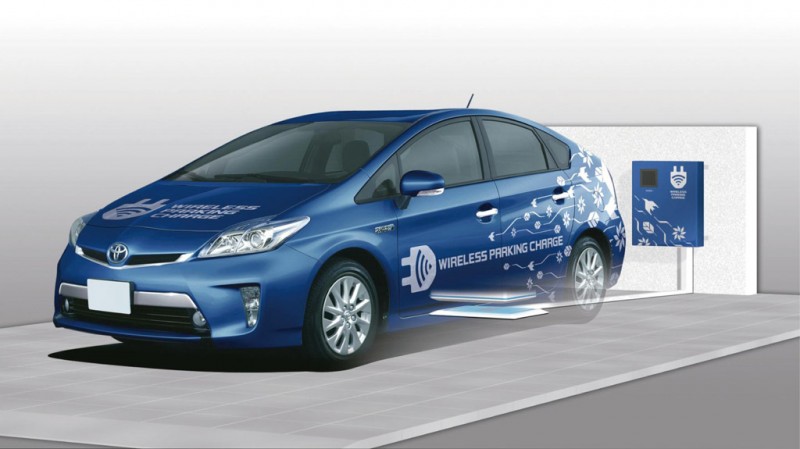Recharging a Toyota plug-in hybrid or all-electric vehicle could in future be as simple as parking the car. Toyota has announced verification testing is to begin later this month of a new wireless battery charging system it has developed for vehicles that use an electric powertrain.
It is important to realise that wireless charging is nothing new, dating all the way back to the days of Thomas Edison and Nikola Tesla. Likewise, wireless charging in more modern times is also not a new phenomenon, since most electric toothbrushes use induction charging so the toothbrush can be sealed water tight without the need for a physical metal connection in order to charge it up. Many modern smartphones also feature wireless charging, so the technology is well understood.
Similarly, wireless charging using the same magnetic induction methods has been seen in electric cars before – many times in fact. Most notably is Qualcomm who have been plugging their Halo system for the last couple of years. Another noteworthy example of this in use already is the record breaking Drayson all electric racing car which uses the Halo system to recharge.
However, Toyota are a big player in the electric market with their range of hybrid vehicle both badged as Toyota and Lexus alike. Therefore, to see them research wireless charging is perhaps a better indication that the technology will finally make it into a mainstream production vehicle that sells in significant numbers.
One thing that has not been addressed, is whether or not the government’s huge investment into wired charging posts around the country has all been in vein, should wireless technology become mainstream within the next few years. The common answer given is that wired charging will still exist and be required to support today’s electric and plug-in vehicles. Similarly, there are indications from the likes of Chargemaster that wired connections will simply be able to plug in a wireless charging ‘mat’, enabling full wireless charging without the need to remove existing infrastructure, instead simply adding to it.
The technology allows a vehicle to be charged simply by parking it in alignment with a coil set into the surface of the ground. This makes the process simpler and easier, dispensing with cables and connectors.
The Toyota charging system transmits electricity using magnetic resonance created by changes in magnetic field intensity between a transmitting coil in the ground and a receiving coil in the car. It is designed so that it can reduce any loss in power transmission efficiency caused by misalignment or height differences between the coils.
The system is being developed with a future market launch in mind. Measures have been taken to minimise any electromagnetic interference with nearby equipment, and the transmitting coil in the ground has been made robust enough to withstand vehicles driving over it.
To help the driver align the car correctly, Toyota has developed a function for its Intelligent Parking Assist system that shows the position of the transmitting coil in a parking space.
The test programme involves three plug-in hybrid used by homes in Aichi prefecture in Japan. It will assess user satisfaction, the system’s ease of use, misalignment rates and charging behaviour, such as how often charging takes place and timer-based charging is used.
Toyota will use the test results to develop the technology further, with the ultimate aim of bringing the system to market. Toyota believes its commercialisation will help promote the use of electrified vehicles and mobility options that are smarter, easier to use and kinder to the environment.
Wireless Battery Charging System key specifications
| Charging method | Magnetic resonance |
| Frequency | 85kHz |
| Input voltage | AC 200V |
| Charging power | 2kW |
| Charging time | Approx. 90 minutes |
Source; Toyota

